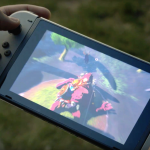
PROS
- Lots of buttons and dials
- 4K Photo and Video
- Viewfinder
- Articulating
- Touch-sensitive screen
- Wi-Fi
- Lots of customisation
- Affordable
CONS
- Very high-sensitivity shots not the best
KEY FEATURES
- 16MP Four Thirds Live MOS sensor
- Splash- and dust-proof
- 4K Photo & Video
- 5-axis image stabilisation
- Wi-Fi
- Articulating touch-sensitive 1,040k-dot LCD monitor
- OLED Live Viewfinder, 2,360k-dot
- 49-Area autofocus
- 330-shot battery life
- 128.4 x 89 x 74.3mm
- 505g
- Manufacturer: Panasonic
- Review Price: £699.00
WHAT IS THE PANASONIC G80?
Panasonic’s new G80 – not to be confused with the GX80 launched earlier this year – sits in the middle of Panasonic’s CSC lineup. It features many of Panasonic’s key technologies, including 4K Photo, in a form that’s reminiscent of a DSLR.
It also features a 16-megapixel Four Thirds sensor, which is unencumbered by an optical low-pass filter, making it better for detail resolution. It has an articulating touchscreen, a viewfinder, Wi-Fi and a slew of impressive specs for a camera at a mid-range price.

PANASONIC G80 – DESIGN AND HANDLING
In terms of body size, Panasonic has opted for compact and neat with the G80, but without going for the flatter or rangefinder style used in some of its other bodies. This means that the G80 has a chunky and substantial grip, and has a form factor that’s reminiscent of a DSLR – albeit at a much smaller size.
In fact, it would be fair to say that the G80 has returned a little to the form of the G5 – a camera from a few years back. The G6 featured a chunkier build and design, taking it almost to the size of a standard DSLR – and perhaps missing the point of a mirrorless camera being a smaller alternative.
A bump in the top plate of the camera houses the electronic viewfinder. The moment you lift the camera to the eye, the screen turns off and the viewfinder automatically switches on in one fluid movement.
The viewfinder itself is extremely bright and clear, giving an excellent view of the screen. It also doesn’t appear to suffer from any noticeable lag as you move the camera from side to side.
Accompanying the viewfinder is a fully articulating touch-sensitive screen. It’s useful for shooting self-portraits, or when shooting at awkward angles, and can be folded away into the body when not in use.
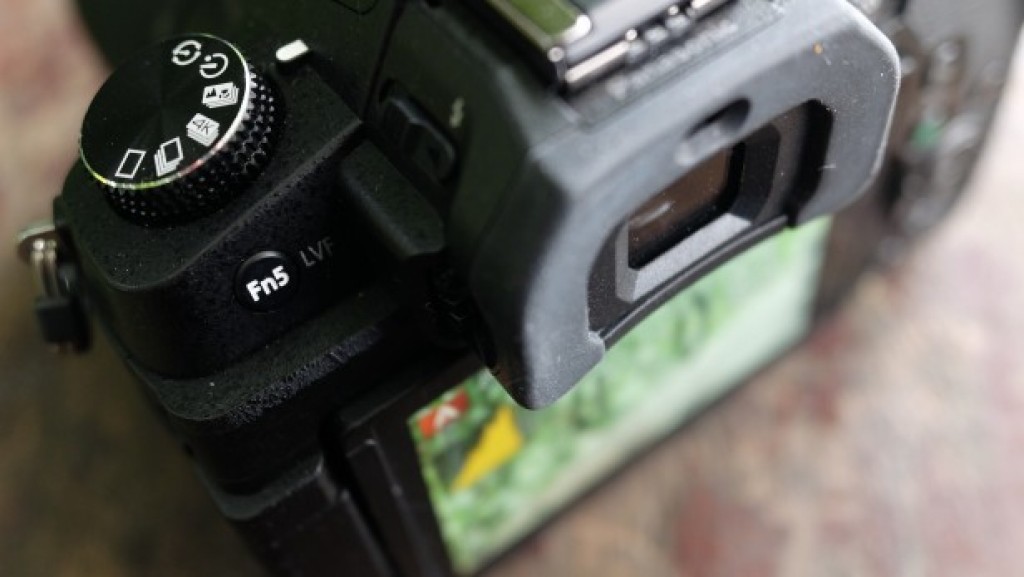
You can also use the touch-sensitive screen to set the autofocus point, or to release the shutter if you wish. You can even continue to use the screen in this manner when using the viewfinder via the super-useful TouchPad AF functionality.
You’ll see that there’s plenty of customisable buttons that you can use to set the G80 to precisely how you like to use it. In fact, there are five buttons labelled with “Fn” around the body of the camera. You can set how each of these work in the main menu.
The Quick Menu button is particularly handy to access various settings without having to delve deep into the menu. Around the shutter release is a scrolling dial that you can use to control different settings, depending on the shooting mode you’re in – for example, to control aperture when shooting in aperture priority mode.
A second dial handily sits beneath your thumb, which can also control shutter speed or aperture, depending on the shooting mode. You can use both dials together when in manual mode, with one controlling one setting, and the other controlling the other for a very fluid way to work.
To change the shooting mode, there’s a large dial on the camera’s top plate. On this you’ll find the standard group of PASM, but also automatic, creative, and scene modes. There’s also a couple of slots to save a group of custom settings, which is useful if you often like to shoot one particular type of scene that requires certain settings.
As standard, the G80 comes with a new 12-60mm lens. In the hand, this feels very balanced with the size and weight of the G80, and is a good lens to capture most every day subjects. As a camera in the Micro Four Thirds format, it’s also compatible with any other MFT lenses that are available on the market – including any from Panasonic, Olympus or third-party manufacturers.
The camera features splash-proofing and dust-proofing – ideal for use when the weather isn’t playing ball, and in general the G80 feels pretty sturdy, with a textured coating adding to that feel of quality.
As always, Panasonic is keen to push its 4K Photo technology, which you can use to freeze moments by extracting stills from 4K-recorded video. To that end, you’ll find a dedicated 4K icon on a dial on the top left of the camera. Simply flick to this to use one of the 4K photo modes – all of which are easy to get to grips with, especially once you’ve had some practice. Also on this dial you’ll find continuous shooting mode, timer, and the innovative “Post Focus” mode.
Post Focus utilises 4K Photo in a very special way. Switch it on and pressing the shutter release will result in the camera taking a series of photos in quick succession, each with a different focus point. When you come to play back the image, you’ll now find that you can touch any point on the screen to change the focus of the image. You can save any of these resulting photos as JPEG images.
Also new for the G80 is the Focus Stacking, which is great for taking close-up macro shots where you want to preserve a very wide of depth of field. Simply take the photo in the same way and then tap an icon on-screen to enter the Focus Stacking option. You can choose between “Auto Merging” and “Range Merging”. The former will merge all of the photos together, while the latter will merge only those from a selected focal range, depending on the depth of field you want to preserve. The merged photo will be output as JPEG image on to your memory card.
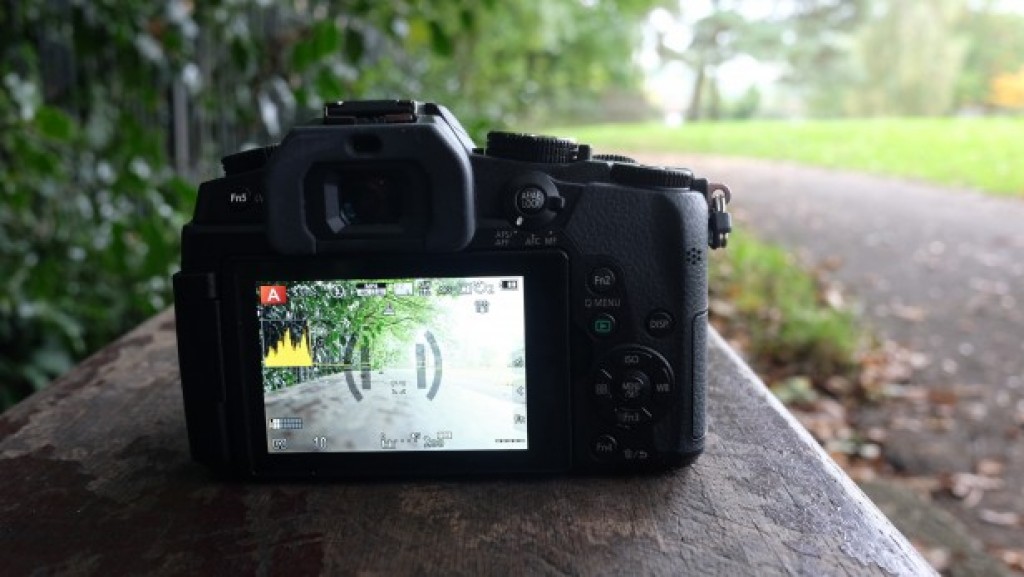
PANASONIC G80 – SCREEN AND VIEWFINDER
The screen is impressively bright and displays the scene well. It isn’t too marred by bright sunlight or reflections, but should such a situation arise, you can easily tilt the screen away from harm. The fact that it is fully articulating is super-handy for positioning it to face forward for self and group shots, as well as having its uses for video recording.
Many people prefer viewfinders, and so will be pleased to note that the one here is very usable. It isn’t the largest on the market, but it’s certainly good enough to be used frequently. There’s a sensor on the eye-piece that switches on the viewfinder, and the screen off, in one fluid transition when you want to use it.
PANASONIC G80 – PERFORMANCE AND AF
We’ve never had any gripes with Panasonic’s autofocus speed, and once again, it’s another solid performance here. When faced with subjects under bright light, the lens quickly snaps into focus. You may find some hesitation with certain lenses – for example, a 30mm macro lens may take a little while to get there. It’s incredibly rare for a false confirmation of focus to be displayed, however.
In lower light focusing slows a little, but it’s assisted by a focus-assist lamp that helps to get it right 99.9% of the time.
That said, continuous autofocusing can sometimes struggle to keep up with the subject if it’s particularly fast-moving; slower subjects fare a little better.
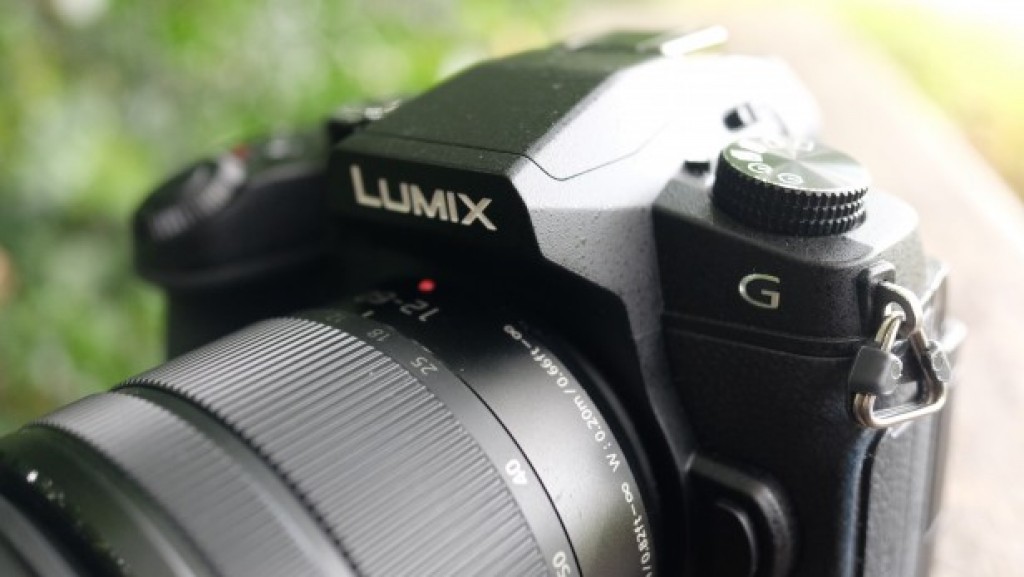
The camera’s general operation speeds are very good: moving through menu systems is a breeze, and there’s plenty to like about viewing your images in playback. Here you can use the touchscreen to pinch to zoom and flick through images, all very quickly and admirably.
There seems to be no noticeable lag between shots, while the buffer clears quickly when shooting at fast frame rates. You’ll notice it takes a little time to process some of the more advanced 4K and Post Focus features – but we’re talking a couple of seconds or so, nothing too dramatic, and perfectly understandable considering what the camera is undertaking.
PANASONIC G80 – IMAGE QUALITY
Image quality is very similar to what we’ve seen with the GX80, and by that we mean it’s excellent.
Detail is fantastic, thanks to the removal of the optical low-pass filter, and the 5-axis image stabilisation is effective at helping to keep blur out of your images – especially if shooting handheld at longer focal lengths.
Colours are well represented, being vibrant and realistic, without straying too far into the oversaturated territory. General-purpose metering does a decent job of getting exposures right in the majority of conditions, while automatic white balance copes well with different kinds of lighting conditions, producing ever so slightly warmer tones under artificial lights.
When it comes noise and detail, shots between ISO 200 and ISO 3200 are excellent – at ISO 3200, you can look at images at normal printing or viewing sizes and struggle to see any issues at all. If you examine at 100%, it’s possible to see some image smoothing at ISO 3200, but it isn’t obvious at normal sizes.
At ISO 6400 and above you’ll see some more severe degradation in image quality. If possible, it’s best to avoid these speeds if you can. But for a mid-range camera, performance is very good.
You can see sample images below.


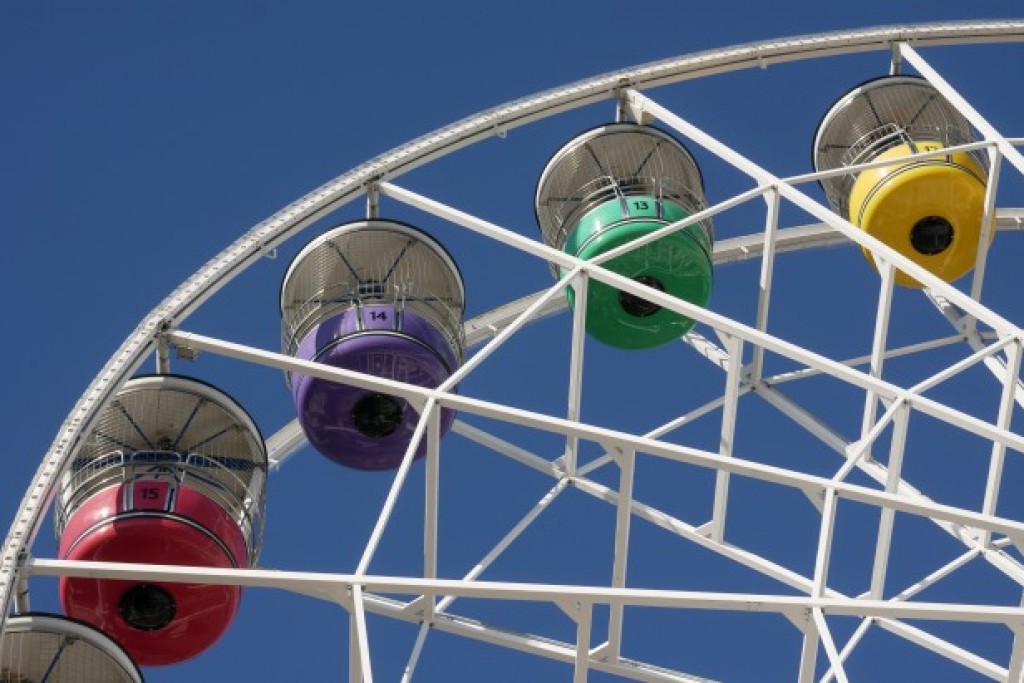

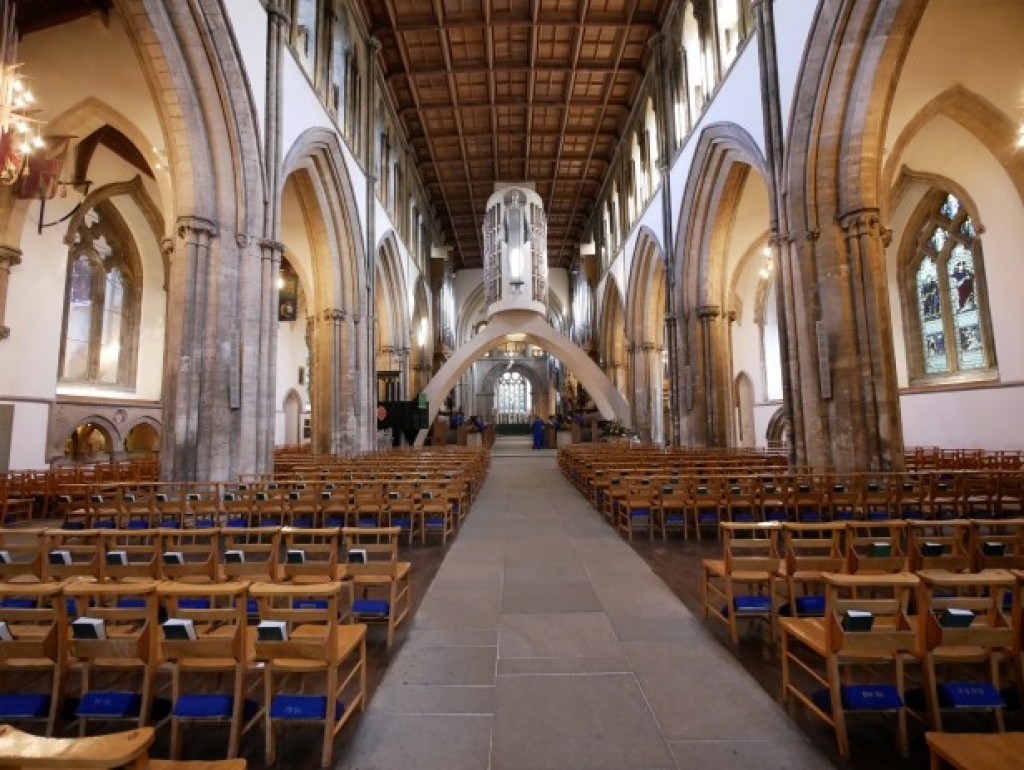


PANASONIC G80 – VIDEO
A camera such as the G80 offers an affordable route into 4K videography. If you’re a serious videographer then the GH4 (or the GH5, when it becomes available next year) will be more suitable, but this is a good camera to get you started.
You can shoot in Full HD, if you prefer. Either way, video footage is smooth and detailed, with focusing quick and easy.
You can also take advantage of 4K to use 4K Photo, which yields some excellent results and is particularly useful for sports, action and fast-moving subjects.

SHOULD YOU BUY THE PANASONIC G80?
Panasonic has impressed with its compact system cameras for some time now, and the G80 is no different.
This camera sits in the middle of the range, as does the flatter-styled GX80. Which one you go for will depend on the style you prefer. The G80 is a more traditional, DSLR-type shape, with a chunkier grip and a fully articulating screen; the GX80 is flatter, which also makes it arguably more compact and easier to carry around.
In terms of image quality, the G80 is fantastic. You can get some really lovely shots with the camera, just using the kit lens. Once you start to think about other optics in the range – of which there are many – you’ll be able to take your photography to the next level.
VERDICT
The G80 offers plenty for a mid-range camera, including an affordable route to 4K video and photo, along with a host of other features. Image quality is excellent, with only its high ISO speeds a concern – something that cameras with larger sensors are able to tackle better.
If you’re somebody that’s not regularly shooting in very dark conditions, it’s unlikely to be an issue though, and you should be very pleased with what it can offer.
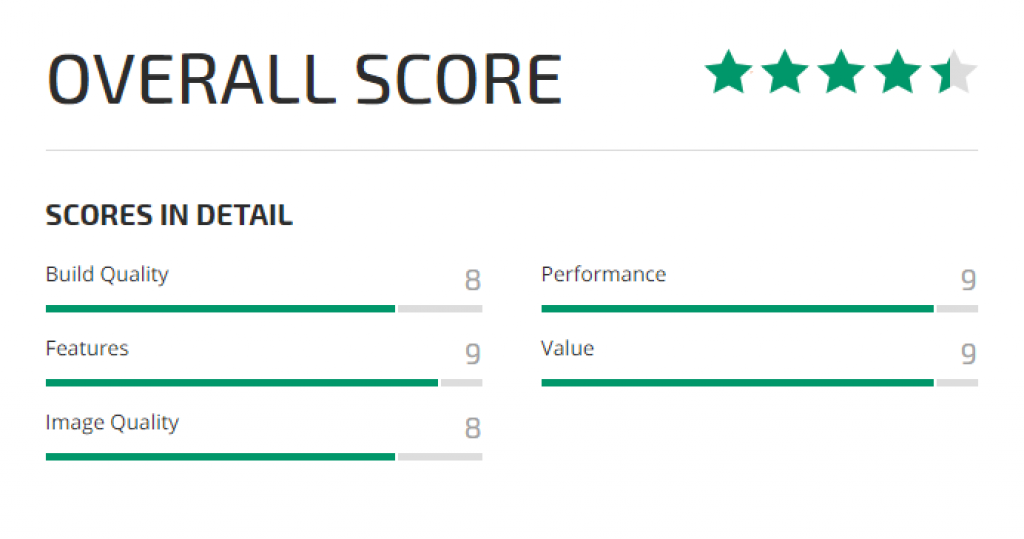
Sourse: trustedreviews.com





































